A swimming pool pump motor is one the largest consumers of household energy. In fact, they are second only to air conditioners. A variable speed motor is a simple solution for that constantly increasing power bill. Here are 5 reasons to get a variable speed pool pump motor.
Energy Efficiency
Kicking off our top five list is energy efficiency. Variable speed (VS) motors can use 50% to 75% less energy than traditional single speed motors and get the same job done. Even though there are sufficient data and customer feedback to support that claim, there are still skeptics. Those skeptics will allege that replacing the current single-speed motor with a lower HP single speed motor can produce the same savings. They are not taking into consideration the design of the variable speed motor and the Pump Affinity Law.
Most variable-speed motors, like the Century V-Green, are considered permanent magnet motors. Thanks to the magnets working to spin the rotor, efficiency is improved in the VS motor. Single-speed induction style motors lose efficiency because additional electricity is required to activate the magnetic field in the rotor. This means that if the same flow rate is needed, a variable speed motor will operate more efficiently and draw less power. Wait, it gets better!
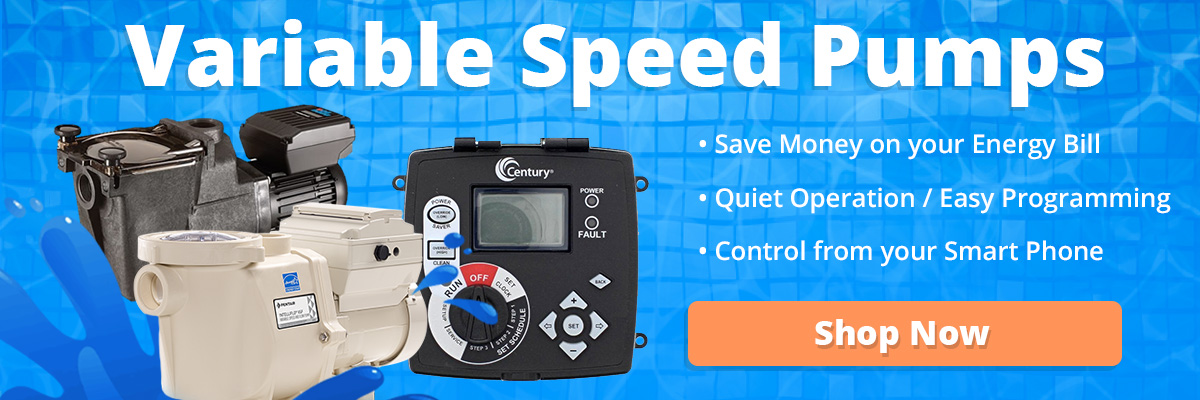
Unlike single-speed motors that can only operate at maximum flow rates, the variable speed motor can slow the water flow and maximize savings. To comprehend what these savings can be fully, it is important to grasp the Pump Affinity Law. This law is used to demonstrate the relationship between motor speed, flow rates, and energy consumption. Essentially, it states that the power consumption drops dramatically as the motor speed and water flow are decreased.
To better illustrate the Pump Affinity Law, we have put together a chart showing the decrease in power consumption based on RPM setting. The numbers reflect a Century V-Green 1.65 HP motor paired with a 1.65 total HP impeller.
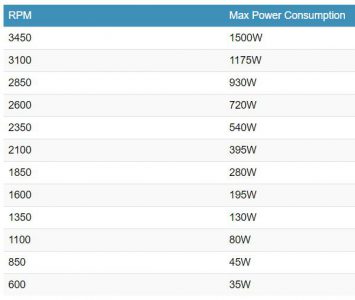
Durability
Variable speed motors are totally enclosed and fan-cooled. The enclosed design protects the internal components of the variable speed motors from environmental elements. On the other hand, single and dual-speed motors are standard induction motors. Vents on the induction motors can allow water, and sometimes critters, to enter and cause damage.
Furthermore, because the variable speed motors run at lower speeds and because they are fan-cooled, the motors stay much cooler. This will aid in preserving the bearings and motor windings. Ultimately, these design differences allow the variable speed motor to have a longer life.
Easy Installation & Programming
Installation of the variable speed motor is the same as a single-speed motor. All of the original pump components can be transferred to the VS motor. This excludes the pump seals which should always be replaced when a new motor is installed. The wiring from a single speed motor is also transferable. The same three lines that were used for the single-speed motor can be used to supply electricity to the VS motor.
Once the motor is installed, it needs to be programmed. Since every pool is different, the programming is not standard. The speed settings will have to be dialed in according to the equipment’s requirements. This will require experimenting with running the motor at different speeds. Once the minimum operating speeds have been determined for each piece of equipment, the run times can be set.
Keep in mind that the items like automatic cleaners and water features do not need to run the entire time the pump is on. It is normal to have those items running only an hour or two a day. A low RPM can be used to circulate the water the rest of the time. As stated before, running the motor on lower speeds generates the greatest savings.
Additional Resources – Poolside Repair: How to Install an Energy Efficient Motor
Remote Monitoring
Until recently, the ability to monitor the pool system remotely required an elaborate control system. Century V-Green variable speed pump motors now have wireless capability when combined with the VLink interface. Once the VLink is connected to the home’s wireless network, the pump can be controlled from any smart mobile device.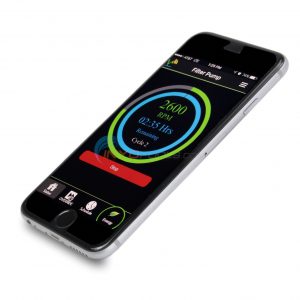
Pool owners can program, monitor and adjust settings anytime, anywhere. Plus, the VLink app displays live energy consumption and delivers the exact operating cost.
Quiet Operation
Concluding our top 5 reasons to get a variable speed motor is noise or a lack thereof. As mentioned before, VS motors are totally enclosed. This means that most of the noise generated is muffled instead of being released through vents like the induction-style motors. While operating at a low speed, it’s hard to tell if the motor is running. Actually, the variable speed motors running at a high speed are noticeably quieter than traditional single-speed motors.

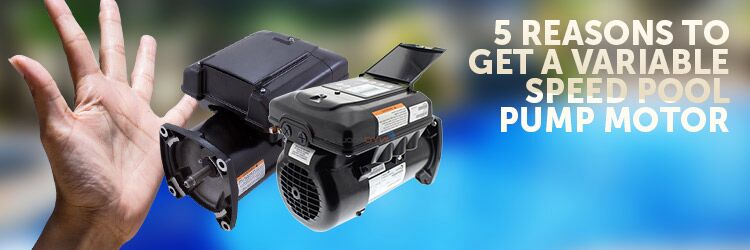
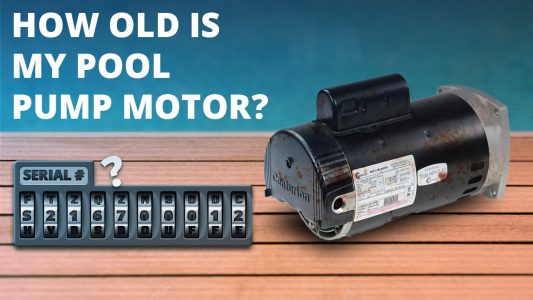
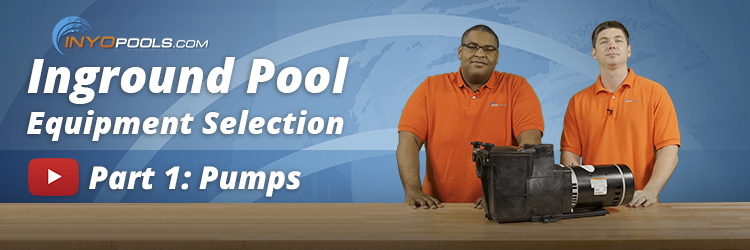
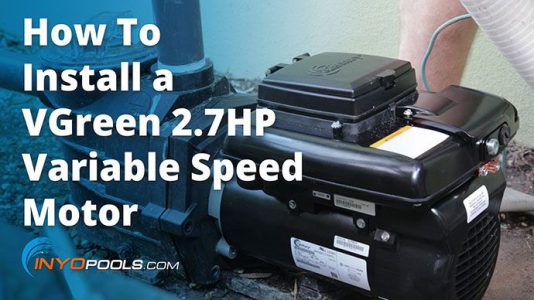
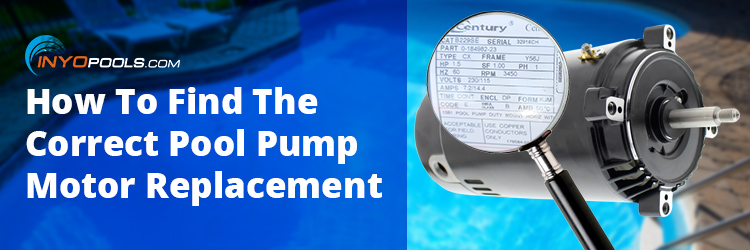






At some point the motor will give out and have to be replaced. Does the whole unit have to be replaced at that time. rhunt5@rocketmail.com
If the motor dies, you would replace it with a new VS motor. The new VS motor would have a mounted user interface and would be wired like the old one. Most VS motors are 230V, so it is two hot wires and a ground.
Hi,
When you have a pool heater linked to the pool system, will a variable pump not effect the heater by the reduced water flow? I understood it might as the heater requires full water through put. What is you view on this?
Yes in order to use the heater, you will need to ramp up the RPM’s in order for it to run and run correctly.
Hello Andy – The required flow rate for a pool heater will depend on the make and model. Most pool heaters can operate at a minimum flow rate between 20-40 gpm. So you can still run variable speed pumps on lower settings. By moving the water through the heater at a slower pace, the water will exit the heater warmer than if it is pushed through rapidly.
My Polaris runs above 2250 rpm with our Century variable speed pump in the early morning hours. When the pump is at a lower rpm during the day how does one get the Polaris to run to check it’s operation? Thank you.
The pump would need to be set to an RPM higher than the 2250 threshold. Most variable speed pumps have an override or “clean” button that temporarily ups the motor’s RPM to a higher setting to accommodate manual or automatic vacuuming. I would check your manual and your motor’s mounted timer interface to see if you find that button.
Or you can manually turn the RPMs up to your desired RPMs for the test, then turn it down when the test is finished.
How does the variable speed pump affect my Polaris?
Hello Ginah – You’ll have to test the RPM settings on the pump to see what is required to move the Polaris. Once you figure that out, you can program the pump to run in that RPM for a particular time each day.
At the high rpm’s everything is good, but once it drops down, I get air bubbles and lose prime. Is this common?
Is this an issue that just started happening, or has this been an issue since adding the variable speed?
We have a large water fall and slide do I need a larger motor to run these?
Hello Diane – The pump requirement would really depend on the requirement of those water features. You’d have to figure out how many gallons per minute those features demand.
My pool is 16′ X 32′. What are the purchase prices for VS pumps to service my pool? And where in the London Ontario region would I find a dealer?
Here is a guide on how to size a pool pump. Once you figure out sizing you can find variable speed pricing here: Variable Speed Pool Pumps
I purchased a variable speed pump to make the savings in electricity as suggested. However I found that as the pump speed decreased so did the EFFECTIVE flow rate disproportionately. By extrapolating on a graph I found that zero flow rate occurred at 600 rpm. In other words I needed 601 rpm to make the water overcome the inertia in my pool system. At 3200 rpm the rate was 38 gallons per minute but at half speed it fell not to 19 gpm but 7 gpm. The wattage may have reduced as per your chart but so did the gpm in a near identical manner. The most important piece of information that a user wants to know is how many gallons per minute the pump is producing on his/her installation at each speed setting so as to calculate the number of times the water in the pool turns over. Secondly is wattage, so as to determine electricity consumption. Rpm is almost unnecessary. No pump gives the gpm (except, I believe, the latest Pentair Intelliflo).
Thanks for sharing your thoughts, Chris. The Pentair Intelliflo VF will display the current GPM. We recommend adding a flow gauge if you have a model that does not display the GPM. As far as wattage, most new variable speed pumps/motors will display the wattage consumption.
My power bill dropped significantly and I was still able to skim day and night for the most part (I think that the schedule shut it down for a few hours at some point in the day but overall very pleased!
That’s what we like to hear, B Phillips. The power bill doesn’t lie. These variable speed motors are great for your wallet.
Hi, Can you tell me what schedule your previous pump ran? Ex: 1 hp 8 hrs a day…
Compared to this new pump? How many hours and what speeds did you set up?
I am interested in this motor but skeptical of the actual energy savings. Can you tell me a more accurate savings your had? Thanks for the info!
Foaming problem, caused by algaecide in the spring, looked very bad with company coming over. Turned off pump and got the garden hose with good nozzle and made something like a heavy rain which got rid of the foam in minutes. Looked good for the event. Very short term fix!!
Foaming caused by some algaecides is a common issue. Thanks for sharing your quick pool fix!